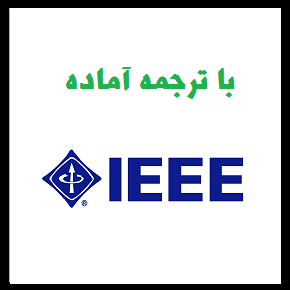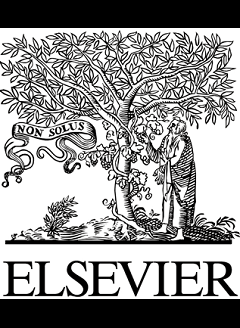دانلود رایگان مقاله شبکه های اجتماعی به مراکز عمل اورژانسی – سال 2019


مشخصات مقاله:
عنوان فارسی مقاله:
از شبکه های اجتماعی به مراکز عمل اورژانسی: یک رویکرد تجسم معنایی
عنوان انگلیسی مقاله:
From social networks to emergency operation centers: A semantic visualization approach
مناسب برای رشته های دانشگاهی زیر:
مهندسی کامپیوتر – مهندسی فناوری اطلاعات
مناسب برای گرایش های دانشگاهی زیر:
هوش مصنوعی – سامانه های شبکه ای
وضعیت مقاله انگلیسی و ترجمه:
مقاله انگلیسی را میتوانید به صورت رایگان با فرمت PDF با کلیک بر روی دکمه آبی، دانلود نمایید. برای ثبت سفارش ترجمه نیز روی دکلمه قرمز رنگ کلیک نمایید. سفارش ترجمه نیازمند زمان بوده و ترجمه این مقاله آماده نمیباشد و پس از اتمام ترجمه، فایل ورد تایپ شده قابل دانلود خواهد بود.
فهرست مطالب:
Outline
Abstract
۱٫ Introduction
۲٫ Related work
۳٫ Exploratory study
۴٫ Semantic visualization tool
۵٫ User evaluation
۶٫ Conclusions and future work
Acknowledgment
References
قسمتی از مقاله انگلیسی:
Abstract
Social networks are commonly used by citizens as a communication channel for sharing their messages about a crisis situation and by emergency operation centers as a source of information for improving their situation awareness. However, to utilize this source of information, emergency operators and decision makers have to deal with large and unstructured data, the content, reliability, quality, and relevance of which may vary greatly. In this paper, to address this challenge, we propose a visual analytics solution that filters and visualizes relevant information extracted from Twitter. The tool offers multiple visualizations to provide emergency operators with different points of view for exploring the data in order to gain a better understanding of the situation and take informed courses of action. We analyzed the scope of the problem through an exploratory study in which 20 practitioners answered questions about the integration of social networks in the emergency management process. This study inspired the design of a visualization tool, which was evaluated in a controlled experiment to assess its effectiveness for exploring spatial and temporal data. During the experiment, we asked 12 participants to perform 5 tasks related to data exploration and fill a questionnaire about their experience using the tool. One of the most interesting results obtained from the evaluation concerns the effectiveness of combining several visualization techniques to support different strategies for solving a problem and making decisions.
1. Introduction
Social networks, such as Twitter, Facebook, and Instagram, have changed the means by which people communicate with anyone from anywhere at any time. The publication and sharing of opinions, feelings, or experiences is becoming a new paradigm for being aware of occurrences in one’s surroundings. This is particularly true when some exceptional circumstances occur. For instance, the first news about the terrorist attacks of November 2015 in Paris originated from a tweet sent from the stadium reporting an explosion. Then, millions of tweets were published by people sharing a personal situation, praying for the victims, or following the response activities. Among the shared messages, it is worth noting spontaneous initiatives, such as the hashtag #porteouverte (open door, in English), where a citizen originated a self-initiated plan that offered people a safe place where they could stay until the crisis was concluded. Emergency operators could be interested in identifying these kinds of spontaneous actions and include them in their official response plan, integrating citizens acting as first–firstresponders [1–3].




